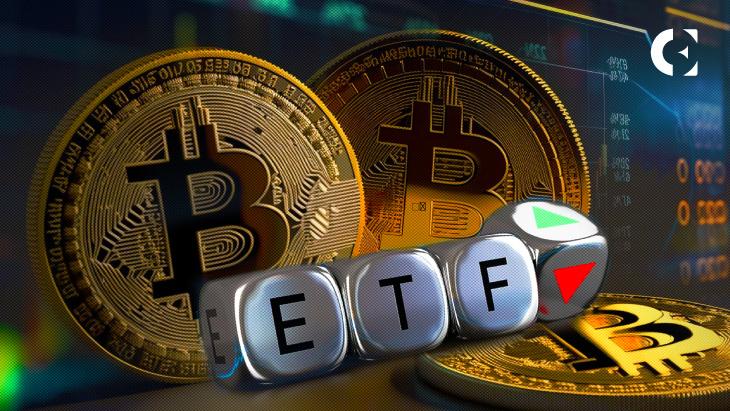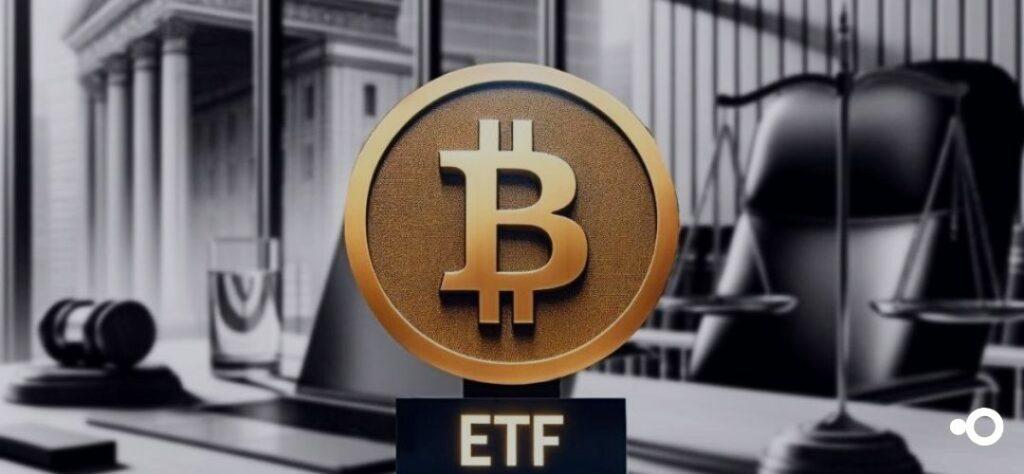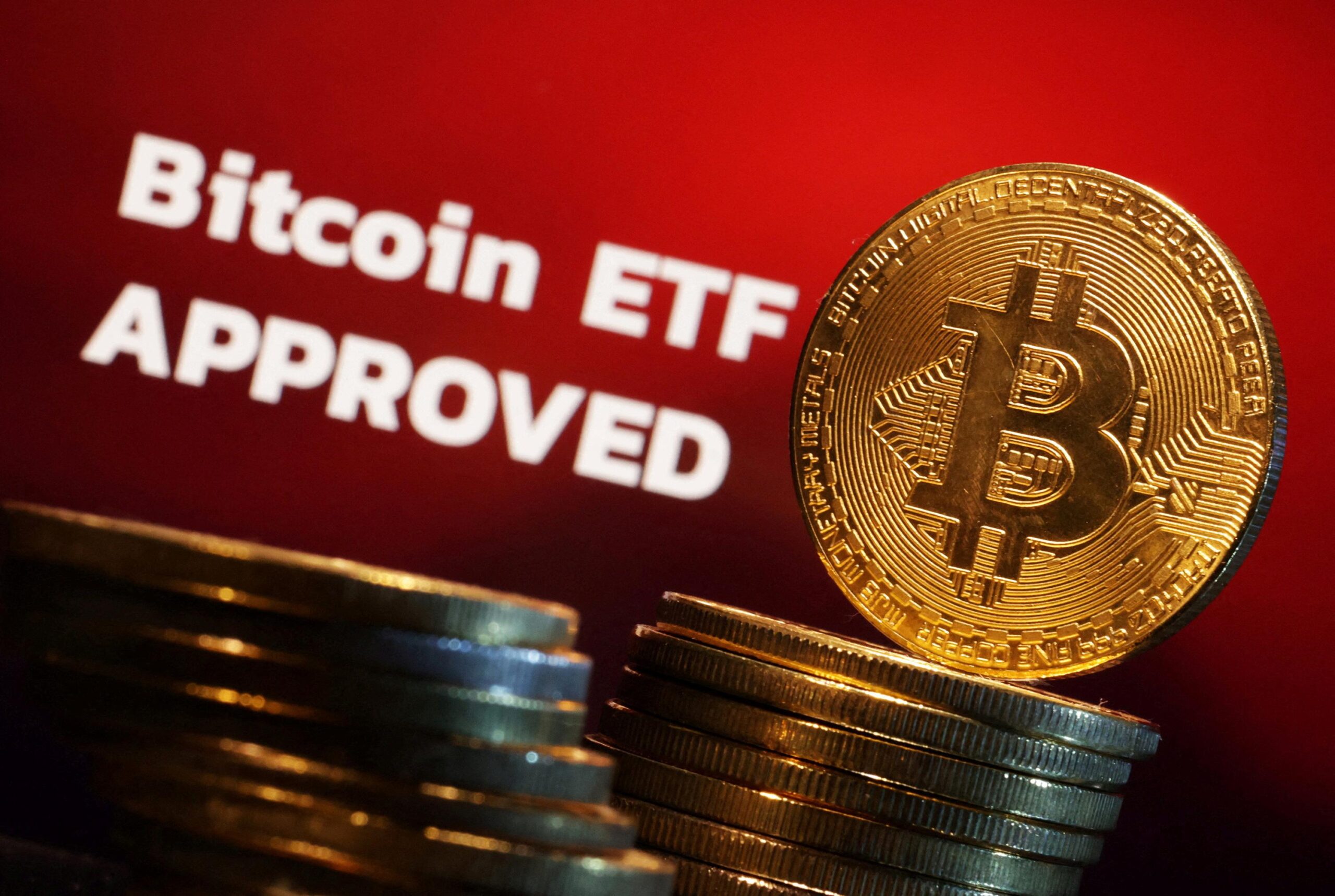In the ever-evolving landscape of cryptocurrency, the advent of Spot Bitcoin Exchange-Traded Funds (ETFs) has emerged as a significant turning point, redefining how investors engage with the world’s most popular digital asset. As these financial products gain momentum, recent developments have highlighted a remarkable milestone: the combined holdings of these ETFs have now surpassed the fabled 1.1 million Bitcoin attributed to Satoshi Nakamoto, the elusive creator of the Bitcoin protocol. This intersection of traditional finance and digital innovation not only raises intriguing questions about supply and demand dynamics in the crypto market but also challenges the very narratives surrounding Bitcoin’s early days and its mysterious founder. In this article, we explore the implications of this shift, examining how Spot Bitcoin ETFs are reshaping market perceptions and the potential consequences for both investors and the cryptocurrency ecosystem as a whole.
Table of Contents
- The Evolution of Bitcoin ETFs and Their Impact on Market Dynamics
- Understanding Satoshis Legacy and the Significance of BTC Holdings
- Investment Strategies for Navigating the Bitcoin ETF Landscape
- Future Implications of Surpassing the 1.1 Million BTC Threshold
- Q&A
- In Conclusion

The Evolution of Bitcoin ETFs and Their Impact on Market Dynamics
The ascent of Bitcoin Exchange-Traded Funds (ETFs) marks a significant evolution in the cryptocurrency landscape, directly influencing market dynamics. As these financial instruments made their way into mainstream investment portfolios, their creation heralded an era of increased accessibility for institutional and retail investors alike. The recent surpassing of Satoshi Nakamoto’s estimated holdings of 1.1 million BTC by spot Bitcoin ETFs underscores this shift, illuminating how these funds can attract substantial capital. This attraction is facilitated by the inherent liquidity and regulatory clarity provided by ETFs, offering a promising avenue for investors who prefer to navigate Bitcoin’s volatility through traditional investment vehicles.
The proliferation of spot Bitcoin ETFs has not only enhanced market participation but also introduced a new layer of sophistication to trading strategies. They allow different classes of investors to engage with cryptocurrency without the technical complexities of owning and managing digital assets directly. The rise in these ETFs has led to a recalibration of trading volumes, price discovery, and overall market sentiment. As a result, market participants are witnessing shifts in the landscape, characterized by increased institutional interest and a more robust discussion around the regulatory frameworks governing the crypto space. The table below highlights some notable Bitcoin ETF launches and their impact on market metrics:
| ETF Name | Launch Date | Assets Under Management (AUM) | Market Impact |
|---|---|---|---|
| Bitcoin Strategy ETF | October 2021 | $1.2 billion | +30% BTC volatility |
| Spot Bitcoin ETF | July 2023 | $5 billion | Boosted institutional buying |
| Crypto Max ETF | January 2024 | $2 billion | Increased retail participation |

Understanding Satoshis Legacy and the Significance of BTC Holdings
The legacy of Satoshi Nakamoto, the enigmatic creator of Bitcoin, is steeped in mystery and intrigue. With an estimated holding of 1.1 million BTC, Satoshi’s impact on the cryptocurrency landscape is profound. This cache of Bitcoin, much of which remains untouched, acts as a symbolic anchor for the entire blockchain revolution. As spot Bitcoin ETFs (Exchange-Traded Funds) enter the market and gain traction, they have crossed this notable benchmark, surpassing Satoshi’s holdings and accentuating the mainstream acceptance of Bitcoin. This shift highlights a pivotal moment in crypto history where institutional investment meets original visions, reshaping perceptions around digital assets.
The significance of holding Bitcoin extends beyond mere ownership; it symbolizes a belief in a decentralized future. Advantages of BTC Holdings include:
- Potential for long-term appreciation as demand increases.
- Hedge against inflation and economic uncertainty.
- Participation in a revolutionary technology reshaping finance.
Individually held Bitcoin positions not only represent personal investment but also contribute to the broader narrative of financial sovereignty. With the market dynamics evolving, understanding these trends offers insight into crypto asset management and the enduring legacy of its pioneer.

Investment Strategies for Navigating the Bitcoin ETF Landscape
As institutional interest in cryptocurrency burgeons, the launch of spot Bitcoin ETFs has generated excitement and transformation in the market landscape. Investors are now presented with diverse strategies to navigate this evolving environment. The initial approach could be to consider the direct purchase of Bitcoin through these ETFs, which allows for profit potential while maintaining regulatory compliance. Additionally, it’s essential to monitor the effects of widespread adoption on Bitcoin’s price dynamics, as increases in ETF holdings could signify increased demand and push up prices, presenting opportunities for strategic entry and exit points.
Another vital strategy involves diversifying your portfolio with a mix of traditional and crypto assets. Given the characteristics of Bitcoin—often considered a hedge against inflation—balancing it with more stable investments can mitigate risk while enhancing potential returns. Investors might also want to explore dollar-cost averaging as a technique to gradually build their exposure to Bitcoin ETFs, which can reduce the impact of volatility by spreading the investment over time. staying informed about regulatory developments, market sentiment, and technological advancements will empower investors to make educated decisions in this fast-paced space.

Future Implications of Surpassing the 1.1 Million BTC Threshold
The recent surpassing of the estimated 1.1 million BTC holdings attributed to Satoshi Nakamoto by Spot Bitcoin ETFs marks a significant milestone in the cryptocurrency landscape. This breakthrough not only reaffirms Bitcoin’s growth trajectory but raises essential questions about the future dynamics of supply and demand. As institutional investors gain easier access to Bitcoin through ETFs, we can expect a shift in market behavior characterized by increased liquidity, broader adoption, and enhanced legitimacy of cryptocurrencies. This scenario could pave the way for Bitcoin to be recognized as a mainstream asset class, fundamentally altering investment strategies across various sectors.
Moreover, the ramifications of this shift extend beyond market mechanics; they could influence regulatory frameworks and public perception of digital currencies. Key implications might include:
- Increased Regulatory Attention: As institutional investments surge, regulators may implement more stringent guidelines to ensure market integrity.
- Enhanced Volatility Management: With higher liquidity, the volatility often associated with Bitcoin may stabilize, attracting more risk-averse investors.
- Shift in Mining Economics: The perspective on Bitcoin’s fixed supply could affect mining incentives, influencing energy consumption and the environmental narrative surrounding cryptocurrencies.
the implications of this pivotal moment extend into multiple facets of the digital economy, demanding ongoing analysis and adaptive strategies from stakeholders within the Bitcoin ecosystem.
Q&A
Q&A: Spot Bitcoin ETFs Surpass Satoshi’s Estimated 1.1 Million BTC Holdings
Q: What does the recent surge in Spot Bitcoin ETFs mean for the cryptocurrency market?
A: The rise of Spot Bitcoin ETFs signifies a growing institutional interest in Bitcoin, allowing more investors to gain exposure to the asset without the complexities of direct ownership. This shift not only boosts Bitcoin’s legitimacy as an asset class but also increases liquidity in the market, ultimately influencing its price dynamics.
Q: Who is Satoshi Nakamoto, and why is their estimated Bitcoin holding significant?
A: Satoshi Nakamoto is the pseudonymous creator of Bitcoin, whose identity remains unknown. It’s estimated that Satoshi mined around 1.1 million BTC in the early days of the cryptocurrency. The significance of these holdings lies in their potential impact on market perception; Satoshi’s dormant coins serve as a reminder of Bitcoin’s origin and the mysterious nature of its creator.
Q: How do Spot Bitcoin ETFs operate, and how do they differ from traditional ETFs?
A: Spot Bitcoin ETFs directly track the price of Bitcoin by holding the actual cryptocurrency in a trust. This contrasts with traditional ETFs that may contain derivatives or futures contracts. The transparency and direct exposure of Spot ETFs aim to reflect real-time market movements more accurately, providing investors with a straightforward way to invest in Bitcoin.
Q: What are the implications of Spot Bitcoin ETFs surpassing Satoshi’s estimated holdings?
A: With Spot Bitcoin ETFs now holding more Bitcoin than estimated to be owned by Satoshi, it raises questions about the distribution and availability of Bitcoin in the market. As ETFs accumulate large quantities of BTC, this could potentially lead to price increases due to reduced supply on exchanges. Additionally, it highlights a shift towards institutional ownership, which may influence Bitcoin’s long-term stability and acceptance.
Q: How might this trend affect new Bitcoin investors or individuals holding BTC?
A: New investors may find increased confidence in Bitcoin as institutional adoption rises through ETFs. The prospect of greater mainstream acceptance could lead to more significant price appreciation, benefiting existing BTC holders. However, increased demand may also bring volatility, as market dynamics shift with larger institutional players participating.
Q: What should potential investors consider when looking into Spot Bitcoin ETFs?
A: Prospective investors should consider their risk tolerance, investment horizon, and the overall market conditions. It’s essential to research the specific ETFs available, their fees, and their holdings. Additionally, investors should remain aware of Bitcoin’s inherent volatility and the regulatory landscape surrounding cryptocurrency investments, which could affect the performance of ETFs.
Q: Looking ahead, what could be the future of Bitcoin and Spot ETFs?
A: The future of Bitcoin and Spot ETFs appears promising as they become a more prominent part of the investment landscape. With ongoing regulatory developments and increasing interest from both retail and institutional investors, Bitcoin may solidify its position as a key asset. The evolution of Bitcoin ETFs could further foster innovation in how cryptocurrencies are traded, making for an intriguing landscape in finance.
In Conclusion
In the ever-evolving landscape of cryptocurrency, the emergence of spot Bitcoin ETFs has marked a pivotal moment that underscores the dynamic nature of digital assets. As these financial instruments have surged past Satoshi Nakamoto’s estimated 1.1 million BTC holdings, they not only reflect burgeoning institutional interest but also herald a new chapter in Bitcoin’s adoption.
This milestone prompts us to reconsider the implications of such growth—both for the market and Bitcoin itself. With increasing accessibility and acceptance, the potential for Bitcoin to integrate further into mainstream finance becomes ever more plausible. As we stand at this crossroads, it is clear that the dialog surrounding Bitcoin will continue to shift, raising questions about its future, its community, and what it truly means to hold a piece of this digital gold.
As we look ahead, the relationship between traditional finance and cryptocurrency will undoubtedly become more complex. Whether this convergence strengthens Bitcoin’s position or alters its fundamental ethos remains to be seen. One thing is certain: the journey is far from over, and in the world of Bitcoin, every milestone tells a story that is still being written.

ivermectin 12 mg over counter – candesartan 16mg without prescription carbamazepine for sale
accutane 10mg uk – cost accutane generic zyvox 600 mg
cheap amoxil pill – diovan 160mg ca combivent 100 mcg brand
order zithromax 500mg pill – nebivolol 5mg ca buy nebivolol 5mg online
buy omnacortil pills – azipro 250mg cost progesterone brand
order gabapentin 100mg pills – order gabapentin 100mg pill purchase itraconazole online cheap
buy lasix generic – order furosemide 40mg without prescription order betamethasone 20 gm without prescription
doxycycline for sale – glucotrol online buy glucotrol 5mg sale
order augmentin 1000mg generic – nizoral cheap buy duloxetine 20mg online cheap
buy generic clavulanate for sale – clavulanate oral buy generic duloxetine 40mg
buy rybelsus pills for sale – buy cyproheptadine 4 mg pills periactin 4 mg us
buy zanaflex pill – hydrochlorothiazide oral microzide sale
order viagra 50mg online cheap – cialis 20mg pill purchase tadalafil pills
cialis tadalafil 40mg – cheap sildenafil sale sildenafil order
cenforce 50mg price – buy glycomet 1000mg without prescription purchase metformin online cheap
order atorvastatin 80mg sale – buy zestril 10mg generic purchase zestril generic
omeprazole tablet – lopressor generic order tenormin 100mg online cheap
generic methylprednisolone online – buy generic depo-medrol for sale how to buy triamcinolone
buy clarinex 5mg online cheap – loratadine us buy priligy 60mg sale
purchase cytotec online – order cytotec for sale diltiazem 180mg us
how to get acyclovir without a prescription – order allopurinol 300mg pill crestor 20mg sale
order domperidone without prescription – buy sumycin 250mg generic buy flexeril 15mg sale
motilium ca – buy generic tetracycline online buy flexeril 15mg without prescription
propranolol brand – buy clopidogrel cheap buy methotrexate 5mg pills
warfarin 2mg brand – losartan 25mg usa cozaar pill
buy nexium without prescription – buy topamax paypal buy imitrex generic
levaquin online buy – order levaquin 500mg generic ranitidine without prescription
meloxicam 7.5mg tablet – buy mobic 7.5mg pills tamsulosin 0.4mg tablet
cost ondansetron 8mg – buy zofran no prescription zocor 10mg for sale
cost valtrex – diflucan sale buy fluconazole without prescription
Thanks for sharing. It’s well done.
modafinil 100mg generic modafinil 200mg cheap provigil 100mg sale modafinil 200mg drug provigil 100mg tablet order provigil cost modafinil
I am in point of fact thrilled to coup d’oeil at this blog posts which consists of tons of useful facts, thanks towards providing such data.
This is the gentle of criticism I rightly appreciate.
order zithromax 500mg sale – buy cheap generic azithromycin order flagyl 400mg online cheap
rybelsus 14mg tablet – order generic rybelsus 14mg buy periactin medication
buy domperidone 10mg sale – sumycin 500mg pill cyclobenzaprine 15mg sale
buy inderal 20mg sale – order plavix 150mg online methotrexate 10mg tablet
amoxil online buy – valsartan 160mg cheap ipratropium 100mcg generic
zithromax for sale – bystolic pill bystolic pills
augmentin 1000mg ca – https://atbioinfo.com/ buy ampicillin paypal
buy nexium generic – anexa mate buy esomeprazole no prescription
coumadin without prescription – https://coumamide.com/ order generic hyzaar
mobic 7.5mg uk – https://moboxsin.com/ order mobic 15mg sale
buy prednisone 20mg without prescription – corticosteroid prednisone order
non prescription ed pills – fast ed to take site can you buy ed pills online
cheap amoxicillin sale – amoxicillin for sale online order amoxil online
order fluconazole 100mg pills – https://gpdifluca.com/ fluconazole 100mg canada
cenforce 100mg canada – https://cenforcers.com/ cenforce 100mg uk
is generic cialis available in canada – https://ciltadgn.com/ ordering tadalafil online
cialis dapoxetine australia – https://strongtadafl.com/# cialis tadalafil cheapest online
order ranitidine online – https://aranitidine.com/# buy generic zantac 300mg
cheap viagra online australia – https://strongvpls.com/# 50mg viagra
This website really has all of the low-down and facts I needed adjacent to this case and didn’t identify who to ask. https://gnolvade.com/es/provigil-espana-comprar/
More articles like this would pretence of the blogosphere richer. buy azithromycin 250mg generic
Thanks an eye to sharing. It’s acme quality. https://ursxdol.com/amoxicillin-antibiotic/
More articles like this would make the blogosphere richer. https://prohnrg.com/product/metoprolol-25-mg-tablets/
Thanks on putting this up. It’s well done. acheter propecia en ligne
More posts like this would force the blogosphere more useful. https://ondactone.com/spironolactone/
The reconditeness in this serving is exceptional.
buy meloxicam for sale
This is a keynote which is near to my verve… Numberless thanks! Faithfully where can I find the connection details due to the fact that questions? http://www.fujiapuerbbs.com/home.php?mod=space&uid=3618570
buy forxiga online cheap – dapagliflozin 10 mg pill pill forxiga 10mg
where to buy xenical without a prescription – https://asacostat.com/# orlistat 120mg without prescription
This is the make of advise I unearth helpful. http://ledyardmachine.com/forum/User-Vyccsr
You can keep yourself and your stock close being cautious when buying medicine online. Some pharmacopoeia websites manipulate legally and offer convenience, secretiveness, rate savings and safeguards to purchasing medicines. buy in TerbinaPharmacy https://terbinafines.com/product/lopressor.html lopressor
You can keep yourself and your dearest by way of being alert when buying medicine online. Some druggist’s websites function legally and offer convenience, privacy, sell for savings and safeguards as a replacement for purchasing medicines. buy in TerbinaPharmacy https://terbinafines.com/product/propecia.html propecia
This is the big-hearted of scribble literary works I positively appreciate. viagra professional pas cher
You can shelter yourself and your ancestors by way of being alert when buying pharmaceutical online. Some pharmacopoeia websites function legally and sell convenience, solitariness, bring in savings and safeguards as a replacement for purchasing medicines. http://playbigbassrm.com/fr/
Thanks recompense sharing. It’s top quality.
https://t.me/s/iGaming_live/4864
https://t.me/s/iGaming_live/4864
https://t.me/s/officials_pokerdom/3615
https://t.me/officials_pokerdom/3159
https://t.me/officials_pokerdom/3607
https://t.me/s/officials_pokerdom/4028
https://t.me/officials_pokerdom/4011
https://t.me/s/bEeFcASiNO_OfFiCIaLS
https://t.me/s/beEFCASiNo_OffICiAlS
https://t.me/iGaming_live/4872
https://t.me/iGaming_live/4872
https://t.me/iGaming_live/4872
https://t.me/dragon_money_mani/31
https://t.me/s/Martin_officials